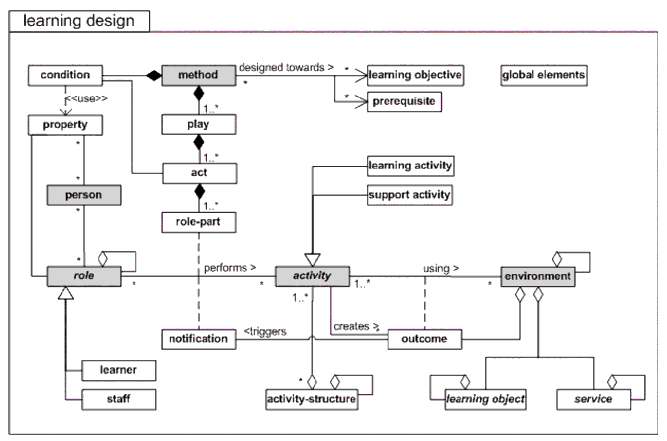A number of ideas are bombarding me at the moment. Meeting Peter Rowlands has changed my perspective on things: this is what universities are really about: creating the possibility of encounter with radically new ideas. Peter is interested in reconfiguring the relation between classical and quantum mechanics. At the root of his approach are three simple concepts: the 'nilpotent' - an imaginary number when raised to a power produces zero; quarternions - 3-dimensional imaginary numbers invented by Hamilton which have peculiar properties; and, most importantly, symmetry.
In grappling with this (and I am still grappling with it... this blog is part of the process!) both symmetry and the nilpotent resonate with me in my thinking about cybernetics, learning, music and emotional life. The nilpotent puts the focus on nothing. The universe is about nothing. Now compare this to the importance of absence in the work of Terry Deacon, or Bhaskar, or Lawson, or the apophatic in the ecological work of Ulanowicz. There is also the category theoretical work of Badiou who places particular emphasis on nothing in his graphs. Is absence nothing? In the sense that absenting is about something "not there"... zero is clearly not there. From Newton's third law (Rowlands has published a number of books about Newton), an obvious point to make is that the resultant force in the Universe is zero. More importantly, the somethings that we see in the universe are the product of constraints of things which we can't see (dark matter/energy). There is a nothingness about dark matter. But there is also nothing in the resultant totality of what we can see and what we can't. The real question is how something emerges from nothing.
In cybernetics, the concept of constraint takes the place of absence - although they are considered to be the same thing (Deacon, Ulanowicz, Lawson are all in agreement about this). The nilpotent idea seems to be mirrored in the tautology of Ashby's Law: a complex system can only be controlled by a system of equal or greater complexity. Something emerges from nothing, through the fact that at any particular level, systems are unstable: The complexity of system a and system b might be greatly different, thus necessitating systems at higher levels to participate in balancing the variety. This is a dynamic process. In terms of understanding it, this is a process that relies on broken symmetry.
Having a fundamental way of describing symmetry-breaking is something which mathematics struggles with. Perhaps the closest we get is in fractal geometry, or in the dynamics of Conway's game of life. But these are the result of heuristics and recursive functions rather than fundamental mathematical properties. The quaternions present a way of thinking about broken symmetry which is fundamental. i, j and k are all square roots of -1, so ii = jj = kk = -1. But ij is not equal to ji. This anti-commutative property gives quaternions the potential to articulate complex matrix structures which have a kind of 'handed-ness'. This abstract property becomes useful to describe the apparent handedness that we see in the universe, from subatomic particles to DNA to the Fibonacci structures in biology.
What's fascinating about this is that nilpotency and broken symmetry combined have remarkable generative properties. For Rowlands, one of the key things is the bridging of the gap between classical mechanics and quantum mechanics. In much social science writing (and in educational technology) it has become fashionable to cite quantum phenomena like "superposition" and "entanglement" as a way of articulating the complex 'sociomateriality' of social life. Many realists object to the woolly language. Scientists like Sokal object to the lack of understanding of physics - although some who promote sociomateriality do so from a scientific perspective - like Karen Barad. Part of the problem lies within physics. Classical mechanics and quantum mechanics are generally considered (not just by Barad) to be different kinds of thing. Rowlands argues that they are the same kind of thing - and in fact, quantum mechanics can be seen to be an entirely logical and consistent extension of classical mechanics. So Newton was more profoundly right about the universe than is widely accepted. Through Rowland's ideas of broken symmetry, issues like superposition and entanglement emerge as logical consequences of the conservation of mass and energy, and the non-conservation of time and space.
So here's a tantalising question: could learning be seen as a product of broken symmetry and nilpotency? My first instinct with these kinds of questions is to ask it of something like learning but more objectively observable: music. Can music be the result of broken symmetry and nilpotency? There have been many studies of the Fibonacci sequence in music - notably in Bartok and Debussy. I strongly suspect the answer to this question is yes. So learning? What is the symmetry of understanding or thinking? Is there a way of answering this question? At a deep level, these are questions about information - and through taking them as such, methods can be devised for exploring them. The way Rowlands is able to explain the emergence of something from nothing immediately suggests a new approach to one of the fundamental questions in the theory of information - the "Symbol grounding problem" (see https://en.wikipedia.org/wiki/Symbol_grounding_problem)
A nilpotent broken symmetry of learning would have to entail a nilpotent broken symmetry of education and other social structures. Might they be investigated in the same way? What about a nilpotent broken symmetry of politics? (Is that dialectic?) Are these too questions about information?
Yes...
In grappling with this (and I am still grappling with it... this blog is part of the process!) both symmetry and the nilpotent resonate with me in my thinking about cybernetics, learning, music and emotional life. The nilpotent puts the focus on nothing. The universe is about nothing. Now compare this to the importance of absence in the work of Terry Deacon, or Bhaskar, or Lawson, or the apophatic in the ecological work of Ulanowicz. There is also the category theoretical work of Badiou who places particular emphasis on nothing in his graphs. Is absence nothing? In the sense that absenting is about something "not there"... zero is clearly not there. From Newton's third law (Rowlands has published a number of books about Newton), an obvious point to make is that the resultant force in the Universe is zero. More importantly, the somethings that we see in the universe are the product of constraints of things which we can't see (dark matter/energy). There is a nothingness about dark matter. But there is also nothing in the resultant totality of what we can see and what we can't. The real question is how something emerges from nothing.
In cybernetics, the concept of constraint takes the place of absence - although they are considered to be the same thing (Deacon, Ulanowicz, Lawson are all in agreement about this). The nilpotent idea seems to be mirrored in the tautology of Ashby's Law: a complex system can only be controlled by a system of equal or greater complexity. Something emerges from nothing, through the fact that at any particular level, systems are unstable: The complexity of system a and system b might be greatly different, thus necessitating systems at higher levels to participate in balancing the variety. This is a dynamic process. In terms of understanding it, this is a process that relies on broken symmetry.
Having a fundamental way of describing symmetry-breaking is something which mathematics struggles with. Perhaps the closest we get is in fractal geometry, or in the dynamics of Conway's game of life. But these are the result of heuristics and recursive functions rather than fundamental mathematical properties. The quaternions present a way of thinking about broken symmetry which is fundamental. i, j and k are all square roots of -1, so ii = jj = kk = -1. But ij is not equal to ji. This anti-commutative property gives quaternions the potential to articulate complex matrix structures which have a kind of 'handed-ness'. This abstract property becomes useful to describe the apparent handedness that we see in the universe, from subatomic particles to DNA to the Fibonacci structures in biology.
What's fascinating about this is that nilpotency and broken symmetry combined have remarkable generative properties. For Rowlands, one of the key things is the bridging of the gap between classical mechanics and quantum mechanics. In much social science writing (and in educational technology) it has become fashionable to cite quantum phenomena like "superposition" and "entanglement" as a way of articulating the complex 'sociomateriality' of social life. Many realists object to the woolly language. Scientists like Sokal object to the lack of understanding of physics - although some who promote sociomateriality do so from a scientific perspective - like Karen Barad. Part of the problem lies within physics. Classical mechanics and quantum mechanics are generally considered (not just by Barad) to be different kinds of thing. Rowlands argues that they are the same kind of thing - and in fact, quantum mechanics can be seen to be an entirely logical and consistent extension of classical mechanics. So Newton was more profoundly right about the universe than is widely accepted. Through Rowland's ideas of broken symmetry, issues like superposition and entanglement emerge as logical consequences of the conservation of mass and energy, and the non-conservation of time and space.
So here's a tantalising question: could learning be seen as a product of broken symmetry and nilpotency? My first instinct with these kinds of questions is to ask it of something like learning but more objectively observable: music. Can music be the result of broken symmetry and nilpotency? There have been many studies of the Fibonacci sequence in music - notably in Bartok and Debussy. I strongly suspect the answer to this question is yes. So learning? What is the symmetry of understanding or thinking? Is there a way of answering this question? At a deep level, these are questions about information - and through taking them as such, methods can be devised for exploring them. The way Rowlands is able to explain the emergence of something from nothing immediately suggests a new approach to one of the fundamental questions in the theory of information - the "Symbol grounding problem" (see https://en.wikipedia.org/wiki/Symbol_grounding_problem)
A nilpotent broken symmetry of learning would have to entail a nilpotent broken symmetry of education and other social structures. Might they be investigated in the same way? What about a nilpotent broken symmetry of politics? (Is that dialectic?) Are these too questions about information?
Yes...
















